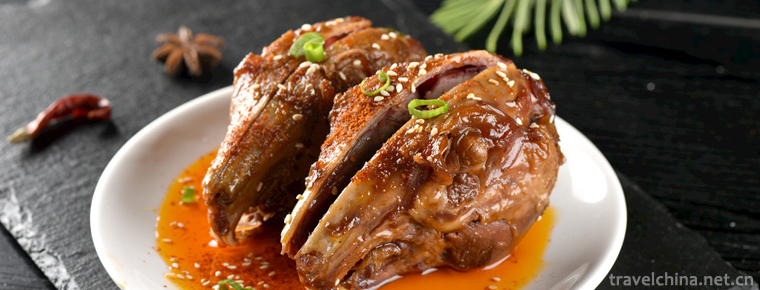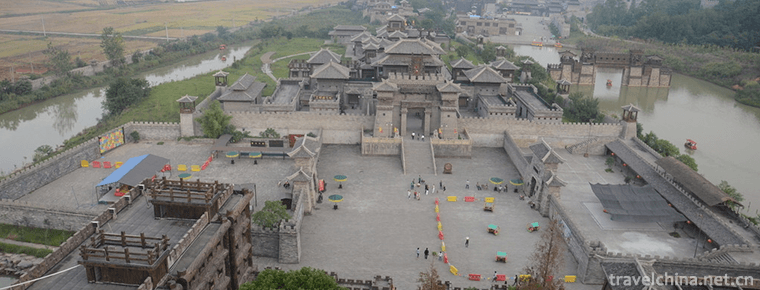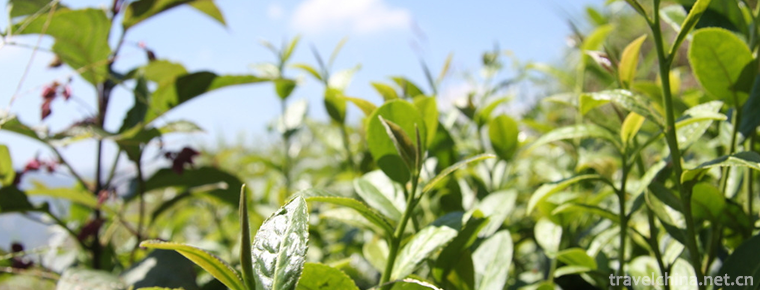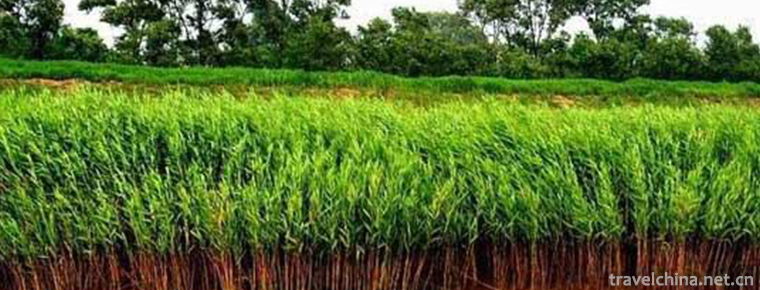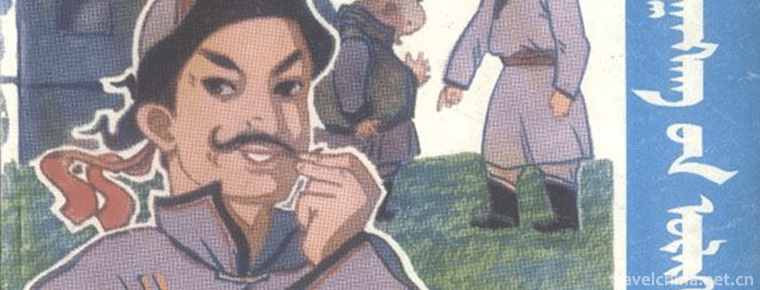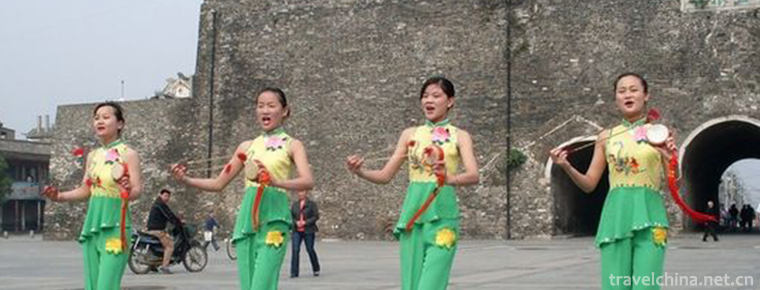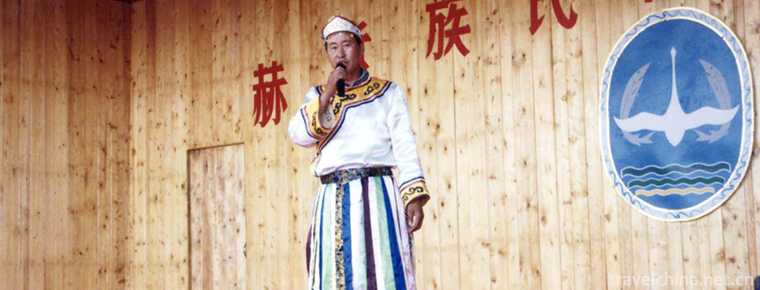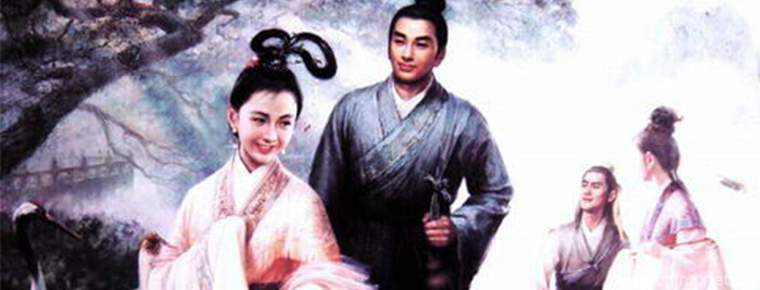Xinglong mountain
Xinglong Mountain is the nearest National Natural Forest Reserve to Lanzhou City. It is located five kilometers southwest of Yuzhong County, Lanzhou City, 60 kilometers away from Lanzhou City and 2400 meters above sea level. Gu was named Qiyun Mountain because of its vast white clouds. It is known as "Longshang Scenic Spot" and is known as "the first mountain in Longyou".
Qiyun Mountain is famous for Liu Yiming's Notes on Qiyun in Qing Dynasty. Liu Yiming (A.D. 1734-1821), who is also known as Yuanzi, is a simple and unsophisticated person. Quwo County, Pingyang County, Shanxi Province, is a native of Wenxi County, Shanxi Province. The eleventh generation of the Quanzhen Taoist Longmen School. It is also one of the most influential figures of Quanzhen Longmen School in the Qianlong and Jiaqing years after Wang Chongyang and Wang Changyue. He was proficient in Neidan, Yi, and medical theory. He wrote Zhouyi Elucidation, Wuzhen Elucidation, Xiuzhen Difficulty, Xiangyan Debate, Nine Essentials of Xiuzhen, Yinfu Jing, etc. In order to play the role of Neidan, he was later compiled as Twelve Taoist Books, which spread widely and became a great Neidan scholar in the Qing Dynasty. He also wrote the Essentials of Tao Te Jing, Heart Jing Jie Yun, Jindan Tips, Qiyun Notes, and medical books such as Experience Miscellaneous Prescriptions, Experience Strange Prescriptions, Enlightenment of Ophthalmology, Treatment of Miscellaneous Diseases and Eye Trachoma.
Mountain system survey
Xinglong Mountain is located five kilometers southwest of Yuzhong County, Lanzhou City, 60 kilometers away from Lanzhou City, 2400 meters above sea level. Qiyun Mountain, named for its vast white clouds, is known as the "Longshang Scenic Spot" in ancient times. It is known as "the first mountain in Longyou". As early as the Western Zhou Dynasty, it has become a place for Taoists to dig caves and practice.
In the Tang and Song Dynasties, there were many temples in Xinglong Mountain, which were called "the heaven and the earth in the cave". In the Qing Dynasty, the temples and pavilions here were magnificent, either on the hillside walls or deep in dense forests, with painted pillars and carved beams and red pillars on the eaves. Most of them were destroyed. Only one Yunlong Bridge (Wo Bridge) was built in the Qing Dynasty to fly across Xinglong Gorge. During the reign of Kangxi in the Qing Dynasty, it was renamed "Xinglong Mountain". In the 1950s, there were more than 70 pavilions, pavilions, temples and 24 scenic spots in the whole mountain, making it a Buddhist and Taoist resort.
Xinglong Mountain is the nearest National Natural Forest Reserve to Lanzhou City. The main peak consists of East and west two peaks, East Peak "Xinglong" at an altitude of 2400 meters, West Peak "Qiyun" at an altitude of 2500 meters, between the two peaks is Xinglong Gorge, with Yunlong Bridge flying over the canyon. Now Qiyunfeng has Mixed Yuan Pavilion, Chaoyun View, Leizu Hall and other palaces; Xinglongfeng has Erxiantai, Taibaiquan, Grand Buddha Hall, Xisong Pavilion, Tear Dropping Pavilion and other scenic spots. Historically, in 1227, when Genghis Khan attacked the Western Xia Dynasty, he died of illness in Xinglong Mountain, where his clothes and weapons were laid. In 1939, Genghis Khan's coffin was transported to Xinglong Mountain and hidden in the Great Buddhist Hall; in August 1949, it was moved to the Tar Temple in Qinghai; in 1954, it was welcomed back by the People's Government of Inner Mongolia Autonomous Region and placed in the newly built Genghis Khan's mausoleum in Ikezhao League's Ijinholuo Banner. Xinglong Mountain is more famous for its history.
geographical environment
Geology and geomorphology
The mountain range in the reserve is the eastern extension of the Qilian Mountains. It consists of the high-mountain group of the Mayan Mountains. The main mountain ranges are Mayan Mountains, Xinglong Mountains and Qiyun Mountains. The north-south confrontation between Mt. Mayan and Mt. Xinglong is saddle-shaped. The two main peaks of Mt. Xinglong and Mt. Qiyun are twisted and tortuous from Mt. Ma'an branch. The mountain body is about 37 kilometers long and 17 kilometers wide. The mountain trend is northwest, southeast and south. It is high in the South and low in the north. The elevation is between 2000 and 3600 meters. The main peak of Mayan Mountain is 3670.3 meters above sea level, and the specific height is between 500 and 1000 meters. It is the only peak over 3600 meters in the Loess Plateau. After the mountain passes through, it extends eastward and ends in the vast loess hills. Geotectonically, it is an island-like Rocky Mountain on the Qinqitai block between the Qinling geosyncline system and the Qilian Mountain geosyncline system. The secondary tectonic units are the Mayan fold dome and Xinglong fold depression of the Qingshiling-Mayan Mountain transect belt. The mountain was formed in the early Quaternary period after the influence of the pre-Cambrian uplift and the new-old orogeny such as Caledonian, Yanshanian and Himalayan periods. Basic mountain systems. In the long geological history period, because of the significant uplift and cutting of orogenic movement, the main compound syncline is mostly V-shaped steep-walled deep valleys, vertical and horizontal valleys, most of the riverbed gradients fall, the ridges are wavy, the slope is more than 30 degrees, and the topography is dentate. Mosaic with the Loess Plateau on both sides of the mountain body, mostly loess denudation landform, the main topographic form is high mountains and deep valleys, earth-rock mountain ridges.
Climatic characteristics
The reserve is located in the mainland of East Asia. It is classified as the eastern monsoon area according to the National Natural Regionalization climate. The continental climate is remarkable and belongs to the high-cold, semi-humid and rainy climate. The main characteristics are that the seasons are distinct and the water and heat are in the same season. It is dry and windy in spring, hot and cool in summer, dry in early summer and rainy in midsummer, rainy in early autumn, cool and rainy in late autumn, cold and snowy in winter. The annual average temperature is 3-7 C, the highest (July) is 13-18 C, the lowest (January) is minus 8-9 C, the active accumulated temperature is 1800-2800 C, the annual precipitation is 450-622 mm, the effective precipitation is 340-520 mm, the precipitation frequency is not uniform, mostly concentrated in July, August and September, and the precipitation accounts for about 55% of the annual precipitation. Under the effect of mountainous precipitation, the precipitation increment of 100 m above sea level is about 27 mm. The annual precipitation of the main peak of Mayan Mountain can reach 800 mm, and the frost-free period is 70-130 days, with an average of 103 days. The average annual temperature of forest area is 4.1 C; the average rainfall is 621.6 mm; the average evaporation is 918.6 mm, which is 1.5 times of the annual precipitation; the relative humidity is 68%, (> 10 C) accumulated temperature is 1577.5 C; the average frost-free period is about 110 days; the degree of dryness is 0.65; the average depth of frozen soil is 120 cm, the maximum is 150 cm. The main disastrous weather is drought.
Soil condition
The soil in the reserve is mainly grey cinnamon soil developed in Rocky Mountainous areas. In addition, there are alpine meadow soil, subalpine meadow soil, chestnut calcareous soil and new accumulated soil. Without a complete distribution zone, it is often due to the relationship between slope direction and zonal soils. Because of the high terrain, high precipitation, low temperature, weak evaporation, large vegetation coverage, the soil is mainly grey brown. Due to the difference of terrain and slope direction, the climate and plant changes are caused, and different leached cinnamon soils are developed. The zonal soil of shady forest land is leached cinnamon soil. Soil-forming parent materials are mainly phyllite, basalt, glutenite, volcanic rock and other residues, slope sediments and loess materials. General fertility is higher, organic matter content is 1.63%, but the soil layer is shallow. The zonal soils of secondary forest land and shrub land on sunny slope are carbonate leached grey cinnamon soil. Soil-forming parent material is the same as shady slope, but due to the large slope, good drainage, sufficient light, fast evaporation, and strong carbonate reaction, mostly alkaline, low organic matter content, poor fertility. In the area above 3000 meters above sea level, because of the high air humidity and low temperature, the vegetation is mostly shrubs and herbs, so the soil transits from subalpine meadow soil to alpine meadow soil.
The gentle slopes on the East and west sides of each gorge mouth in the front Hill belong to chestnut calcareous soil developed on loess parent material. The loess layer is thicker, the vegetation is sparse, the evaporation is large, the soil is dry, the organic matter content is low, the loess is loose, the water permeability is good, the soil layer is deep but the fertility is poor. The PH value is 8, showing strong lime reaction. The reserve is rich in biological resources. 109 species of macrofungi, 1022 species of higher plants, 1135 species of spiders and insects and 160 species of higher animals have been identified. They are renewable resources in protected areas and the main body of complex ecosystems. The Nature Reserve was originally a Taoist holy place. There are many scenic spots for tourists to visit. Like the main body of the complex ecosystem, they should be protected and rationally exploited.
Key scenic spots
Yunlong Bridge
Yunlong Bridge is a Gallery-style wooden arch bridge. Its body is a wooden arch, delicate and exquisite, like a rainbow across the mountain streams. The bridge is 155 meters long and 3 meters wide. There are seven corridors on the bridge. Each end of the bridge has a pavilion. It is a building with four corners flying eaves on the top of Xieshan Mountain. In the gallery, there are carved beams and painted pillars, and the top of the gallery is covered with glazed tiles. According to Taoist doctrine, "Long Tengyun, Yun Conglong", the bridge makes Qiyun, Xinglong two peaks linked together, so it is called "Yunlong Bridge". Bridge head seal carved a pair of striking couplets: "more clouds than Mount Tai, the rain of life immortal pleasure; the Dragon into the Cangzhou overseas, fluttering green clouds and spiritual spirit."
After the war in the late Ming Dynasty, pilgrims in the mountains had disappeared, leaving only silent empty mountains. There used to be a sleeping bridge in the valley, which had been destroyed by the flood and only two piers remained. Liu Yiming is sentimental and sentimental. He is determined to renovate the mountain and restore the "Xinglong" scenic spot. So he treated the disease and raised money for Xinglong Mountain. After years of hard work, a hundred palaces and pavilions were built on the mountain, and a magnificent wooden arch bridge was built. At that time, it was named "YingShan Bridge", which meant welcoming the good men from all directions. Since then, the incense of Xinglong Mountain has never faded. Later, when a mountain torrent broke out and the bridge was washed over, Liu Yiming was very sorry and helpless. One of his apprentices, Tang Tong, was collecting medicines one day. When he saw someone falling into the water, he desperately rescued him from groundwater and went ashore. She was blind and deaf. Instead of abandoning the old man, Tang Tong changed her clothes and brought her lots of food to eat. The wife thought Tang Tong was kind, so she gave him a three-inch-long straw and said that when the river blocked the road, it could be used as a bridge. Tang Tong took the wheat straw and was about to thank him. Suddenly his wife disappeared. Tang Tong wanted to verify his wife's words. He came to the river and put the wheat straw on the river. In a twinkling of an eye, he became a beautiful bridge. Since then, the bridge has never been washed over by floods.
Great Buddha Hall
There are three main halls in the middle of the Great Buddha Hall, with two supporting halls on each side. Dougong eaves, carved beams and painted pillars, are painted in blue, green and red, solemn and solemn. The three spruces in front of the palace are tall and tall, and there are five yurts in the courtyard. The four words "Daxiong Palace" above the hall are Zhao Puchu's handwriting. In the main hall, three Buddhas are worshipped, with Sakyamuni in the middle of Sava World, Pharmacist Buddha in the Eastern Pure Glass World on the left and Amitabha Buddha in the Western Paradise World on the right. In front of Sakyamuni is Genghis Khan, the famous Taizu of Horseback Tianjiao Yuan. Genghis Khan is Mongolian, meaning "a great leader like the sea". The statues in the hall, with gold clay makeup, smooth lines and vivid images, are the masterpieces of Pingliang artists in Gansu Province. Genghis Khan, the proud Genghis Khan, the iron horse general in his life, is a heroic and warlike national hero. His excellent military tactics and outstanding generation of martial arts, Megatron Eurasia, China. It has left a glorious page in the history of China's strategy, which has helped the Chinese nation to gain strength and courage. It deserves the title of "national elite". In 1939, in order to avoid looting by the Japanese army, the government of the Republic of China decided to move rapidly westward at the request of the leader of the Ikezhao League, and entrusted senior officials such as Deng Baoshan, Gao Shuangcheng and He Zhaoguo to form special envoys for the relocation. On May 17, on the advice of historians, Genghis Khan was decided to move to the Xinglong Mountains of Gansu Province on the basis of respecting the reasons why Genghis Khan had stationed troops, consolidated troops and convalesced during the attack on Xixia in 1226. In order to commemorate the ten-year history of Genghis Khan Lingzhao in Xinglong Mountain and its role in Chinese history, Lanzhou Municipal People's Government and Yuzhong County People's Government invested 420,000 yuan to rebuild the Great Buddha Hall in 1987. Li Deyuan, Director of the Standing Committee of Yuzhong County People's Congress, and the Director of Foreign Affairs and Tourism Bureau of Yuzhong County, went to the People's Government of Inner Mongolia Autonomous Region to consult with the Central Committee for Ethnic Members will contact and be assisted and supported to reproduce Genghis Khan, Kualan Hatton's Rings and their relics Suluding, Swords and saddles, which were placed in Ijinholo. After a year of joint preparation, the "Genghis Khan Museum of Cultural Relics" was finally set up in the Great Buddhist Hall of Xinglong Mountain, which has brought a scene of history to light.
Chiang Kai-shek's official residence
In 1942, in order to welcome Chiang Kai-shek to Lan, the Gansu Provincial Government of the Kuomintang appointed special engineers to build a small and exquisite villa with unique structure and solemn depth. This is the famous Jiang's palace. On the first floor, there are living room, waiting room, attendant room and conference room; on the second floor, there are conference room, main room, bedroom, dressing room and toilet. In August 1943, Chiang Kai-shek, Song Meiling and Chen Brai, the important secretary, all lived here for six days. Every day after dinner, Chiang Kai-shek walks around with his crutches and his wife, or goes up the hill on a skatepole. Here, Chiang Kai-shek chaired the Northwest Military and Political Conference.
Mayan Mountain Tourism District
Mayan Mountain Tourism District is located in the south of Xinglong Mountain, northwest and southeast, with an area of 398 hectares, the highest altitude of 3670 meters, the top of which is like a plain river, about 8-10 kilometers wide and about 40-50 kilometers long. Mayan Mountain is mainly characterized by the frozen land in the alpine cold zone. Its high terrain and severe cold climate make the landscapes of Mayan Mountain different from those of Xinglong Mountain and very similar to the Qinghai-Tibet Plateau, which is known as the Earth's Tripole. Maxian Mountain is an important place to inspect the glacier frozen land topography because of its peculiar landforms, including frozen hills and ancient periglacial relics. The vertical distribution of climate and vegetation in Maxian Mountain is very obvious. There are both primitive forests and alpine meadows. Every midsummer, we can see the wonderful scenery of snow drifting on the top of the mountain, beautiful flowers on the hillside and green waving downhill. It is really called "four seasons in a calendar, ten miles in different days". Mayan Mountain has a long history and splendid culture. It has been handed down in folklore such as big stone horse, small stone horse, sarcophagus and Jinlongchi. According to the Records of Yuzhong County, in the preface to the epitaph of Madame Murong of Gujiaohe County in the Tang Dynasty, Mayan Mountain was called "Bohan Mountain"; in the Song and Ming Dynasties, Mayushan Mountain was called "Mayushan Mountain"; in the twenty-fifth year of Hongwu of Taizu in the Ming Dynasty, Zhu Ying, king of Suzhuang, established "Mayan Mountain" as a summer resort; in the Qing Dynasty, Mahan Mountain was named "snow accumulated in the eight sceneries of Yuzhong"; in the Republic of China, it was renamed as "Ma
The bridge was first built in the 28th year of Qianlong, 1763 A.D., and was destroyed and rebuilt many times. In the 26th year of Guangxu, in 1900 AD, Cen Chunxuan, a political envoy of Gansu Province, rebuilt the silver, and Chen Chang of Zhixian County renamed it "Yunlong Bridge". Yunlong Bridge is one of the ancient buildings in Xinglong Mountain and one of the symbols of Xinglong Mountain. It is included in the provincial cultural relics protection. In 1981, the government appropriated funds to rebuild the bridge because it was tilted. In 1985, Lanzhou Landscape Architecture Bureau redrawn the bridge. After deleting the couplets of Chen Chang's questions, Zhao Zheng, vice president of Gansu Calligraphy Association, wrote them and hung them in front of the pavilion.
Guan Tan gou
Guantangou Tourist Area is a National Nature Reserve of Xinglong Mountain, located in Heping Town, 25 kilometers southeast of Lanzhou City, with an area of 342 hectares. It is a new type of tourist area with forest natural ecology as its main part. Guantan ditch is the old site of Suwang horse ranch in Ming Dynasty, formerly known as "Sufu Guantan", and now there is a boundary sign of "Muma Guantan". There are two mountains and a valley in the area, and the valley is bypassed. Although the shape of the hill is not so exquisite, it is full of wild interest. People feel green and bright when they enter Guantan Gully. The forest coverage rate in the area reached 86.2%. With the increase of altitude, artificial coniferous forest, secondary broad-leaved mixed forest and alpine shrub appeared successively. Trees and shrubs are scattered in different places, seasonal color changes are rich, and the forest environment is gorgeous and pleasant. Valley stream water is clear and continuous throughout the year. It is a high-quality mineral water and has been developed and utilized. The mountain springs flowing from the canyon are like silk chains, gathering dripping cliffs, forming unique dripping cliff waterfalls, which make tourists linger and forget to return. Guantangou Mountain is gentle and beautiful. In spring, the trees are green and the spring is melting; in midsummer, the trees are flourishing and the flowers are blooming; in autumn, the scenery is gorgeous and the mountains are red. Give people a quiet, comfortable, fresh natural enjoyment. The main scenic forests in Guantan Valley are poplar birch forest and shrub forest. The tree species composition is aspen, birch, Quercus liaotungensis and Cotoneaster, Hippophae rhamnoides, Rosa japonica and so on.
Prose description
According to Lanzhou Daily, 100 Essays on Extracurricular Reading Training for Senior High School Chinese (Golden Edition) published by Jilin Education Publishing House (4th Printing, 7th Edition, July 2009) include Xu Feng, a writer from Yuzhong County, Gansu Province, who is currently a member of the Chinese Writers'Association and chairman of Luogang District, Guangzhou City.
It is understood that, as a collection of contemporary literary works read by high school students, 100 pieces (golden edition) of extracurricular reading training for high school Chinese include the works of 45 writers from modern, contemporary Poland, Bulgaria, India, France and China, as well as Taiwan, China.
"Xinglong Red Leaf Love" was written in August 2001 and published in the supplement of "Earth" of People's Daily on January 17, 2002. After this article was published, it was selected into the books of Anhui Children's Publishing House, Beijing Chaohua Publishing House, Jilin Yanbian University Publishing House, such as Reading Language, Beautiful Literature Moving the Mind, Super Reading Junior Reading, etc. Since 2003, this paper has also been selected into the simulated Chinese test papers of the College Entrance Examination in many middle schools in Anhui, Zhejiang, Fujian and Guangdong, with the test scores of 14 to 25.
Xinglong Red Leaf Festival
Xu Feng
In cities, red leaves are almost impossible to find. In the late autumn, the trees in the city began to be restless, like a grumbling woman, with no passion. The leaves began to fall off reluctantly, and then were trampled by passers-by and quickly swept away. The leaf was orange, mottled and blurred. Like a makeup lady, pale and powerless.
So you see the autumn trees, along with the leaves, are ignored by people. There are no more murmurs of lovers and no laughter of children under the trees. If someone is still standing under the tree and still staring at the trunk, it may cause a lot of spectators.
So the trees of the city are sad, and the leaves of the trees of the city are sad, no more than the trees of the countryside, no more than the primitive forests.
In this season, I suddenly found red leaves in Xinglong Mountain, not far from Lanzhou. Over the mountains, brilliant and dazzling, under the cover of drizzle, like a sprinkling ink landscape painting, inlaid on the mountain body, and showing a sudden shape. The red is atmospheric, with the unrestrained nature of mountains; but also implicit, it seems to be in repression, waiting for the moment of bursting. At this time, red leaves are just lovely.
Bridges and flowing families, such scenery in the city I feel is a kind of illusion, illusion is actually rare. But here it is very real, there are bridges and water, as for others, it is the mountain girl who cleans the ladder. Red leaves are at this time, gently brushing, your eyes follow, your mood follow, your thoughts follow, even in the moment when the red leaves fall, your heart also falls sharply.
Red leaves are respectable, especially in the cold mountains, in some bleak late autumn, they are alive and lively; they are smiling, brilliant laughter; they not only foil the vast shadows of the mountains, but also dominate the nature of life, so they have reason to be proud.
Standing at the foot of the tree and looking up, you will find that the red leaves are so fresh and tender. With the gentle and gentle feeling of the raindrops falling continuously along with the slight mountain breeze, you will immediately overflow your face. If you can't help wanting to touch, you will probably fall into a rain. Or if you haven't climbed up the tree, the red leaves will fall down in a desolate way, and you regret it very much. In fact, no matter how beautiful things are, they will lose their colour. The beauty of red leaves lies in looking up. The gorge, the canyon, or by the roadside, looking at it from afar, looking at it from afar, or looking at it through the car window, looking at it carefully in a melodious and soothing music, your mind will probably calm down a lot.
The spirit of the Red Leaves is positive, publicizing, not acting, not hiding, not hypocritical, not wanting to catch up. Such scenery is hard to find. Only in the mountains, in the pure nature without pollution, impetuosity and material desire, can she really exist.
Red leaves are such a feeling. They are beautiful when viewed from a distance, tender and lovely when viewed near. I don't even know the real name of the red leaves and the real names of the trees growing red leaves. But are these important? Like a street woman, if you know where she comes from, where she goes, her vulnerability and her flaws, will your eyes wander?
I said, if only there were such a red leaf on the balcony. Friends said, leaving here, red leaves will die, even if not, that red is also mixed with other ingredients, like the face of women in the city, flooded by chemical things.
When I left, I picked up two pieces of red leaves that had just fallen. One circle was the color of bright red blood. The middle was deep yellow. The stem was like a tiny red candle. I think my daughter would be surprised to see it. In the city, she may never see the real red, real yellow. Her eyes were tightly covered.
Tourism strategy
The wet climate of Xinglong Mountain is a good summer resort for tourism in Northwest China. It receives more than 500,000 tourists from inside and outside the province every year. Xinglong Mountain has successfully hosted many important international conferences.
Tickets: Dongshan / Xishan / Ma Bian Shan: 40 yuan / half price per student
traffic
medium-sized bus
Take the bus to the east of Tianshui Road Station or Tianshui intersection, and then take a private bus to Huandao (ticket 7 yuan) in Yuzhong County for 10 minutes or so to the foot of Xinglong Mountain.
Self driving
Lanzhou departure, through peace, Dingyuan, connecting - Yuzhong - Xinglong Mountain, more than 40 minutes'drive.
Accommodation: There are many hotels on Xinglong Mountain, and farmhouse entertainment is available for accommodation. Better take more clothes. The quilt in the hotel is thin and cold at night.
Food: Xinglong Mountain Food in the mountain restaurant can eat delicious hand-made noodles, as well as a pot of noodles, lazy pimples, paste rolls, baked potatoes and other special foods. Especially when it's cold, a bowl of steaming soup noodles, potato chips, and a few strands of coriander, plus a few pieces of beef, Woosai, all these years still can't forget.
Shopping: Pteridophytes, pine flowers, shallots and so on are specialties here.
Best tourist season
March-June is the best time to travel and the climate is suitable for mountain climbing.
It is dry and windy in spring.
Summer is hot and cold, early summer is dry and midsummer is rainy.
It rains a little in early autumn and is cool and rainless in late autumn.
It's cold and snowy in winter.
Ski Field
Xinglongshan Skiing Ground Ticket Center Address: Block A2, 19th floor, Changyun Building, Jingning Road, Lanzhou City
Opening hours: 09:00-17:00
Skiing Price: Please refer to the official reservation website of Xinglongshan Skiing Ground (online reservation can be made):
Ticketing Center Bus Line: 8:30 East Red Square, west of the rostrum, 16:00 from the snow farm back, about 17:00 to the urban area.









-
Rabbit head
Rabbit head is a traditional snack in Sichuan Chengdu, Shanxi Datong and Zhejiang Quzhou. .
Views: 225 Time 2018-10-13 -
Xibaipo Scenic Area Pingshan County Shijiazhuang
Xibaipo is located in the middle of Pingshan County, Shijiazhuang City, Hebei Province, with a total area of 16,440 square meters. It was the seat of the CPC Central Committee.
Views: 148 Time 2018-11-24 -
Chibi ancient battlefield
The ancient battlefield of Chibi in the Three Kingdoms, where the battle of Chibi took place, is located on the South Bank of the Yangtze River in the northwest of Chibi City, Hubei Province.
Views: 393 Time 2018-12-12 -
Anxi Tea Grand View Garden
Anxi Tea Grand View Garden in Quanzhou, Fujian Province is located in Fengguan Mountain on the north side of Fengcheng City. It covers an area of 11 mu.
Views: 116 Time 2019-01-02 -
Weihai Dingxiang Ecotourism Resort
Panjin Dingxiang Ecotourism Resort is located in the western suburb of Panjin City. The tourist area is mainly composed of Taiping River scenic belt, Bird Paradise Scenic.
Views: 501 Time 2019-02-22 -
The Story of Barragan
Stories of witty figures of the Mongolian people in China. Long-term spread in Inner Mongolia, Xinjiang and other Mongolian areas. The protagonist Balagan Cang is the representative of the working peo.
Views: 231 Time 2019-04-02 -
Fengyang folk songs
Fengyang folk song is a traditional folk song in Anhui Province. Fengyang folk song in Fengyang flower drum is one of the important components of Fengyang folk song.
Views: 207 Time 2019-04-29 -
Imakan of Hezhe Nationality
Imakan is a unique rap art of the Hezhe people in Northeast China. Its performance form is a combination of one person's rap and singing. It has no accompaniment with musical instruments and uses the .
Views: 192 Time 2019-05-03 -
Legend of Liu Ruan
The legend of Liu Ruan, also known as the story of Liu Ruan's encounter with immortals, is spread in Shangxian (now Xinchang, Shengzhou) and Tiantai. It is a mythological love story that takes Liu Rua.
Views: 389 Time 2019-05-13 -
Traditional preparation methods of traditional Chinese medicine
Traditional Chinese medicine preparation method, one of the traditional Chinese medicine, is declared by the Chinese Academy of Traditional Chinese Medicine and the Chinese Association of Traditional .
Views: 194 Time 2019-08-03 -
Cai Lun
Cai Lun(?-121 years ) Zhong Zhong, a member of Guiyang County in Eastern Han Dynasty. Emperor Ming of Han Yongping entered the palace in the end, Zhang and two years (AD 88). Cai Lun was promoted to t.
Views: 291 Time 2019-09-06 -
Seven Star Mountain tower
The Seven Star Mountain tower, commonly known as the black tower, was built in the Jiajing period of the Ming Dynasty (1522-1566). It is the brother tower of Dongshan white tower. It is on a peak of Qixing mountain in Taba village, Nanguang Town.
Views: 375 Time 2020-10-16
